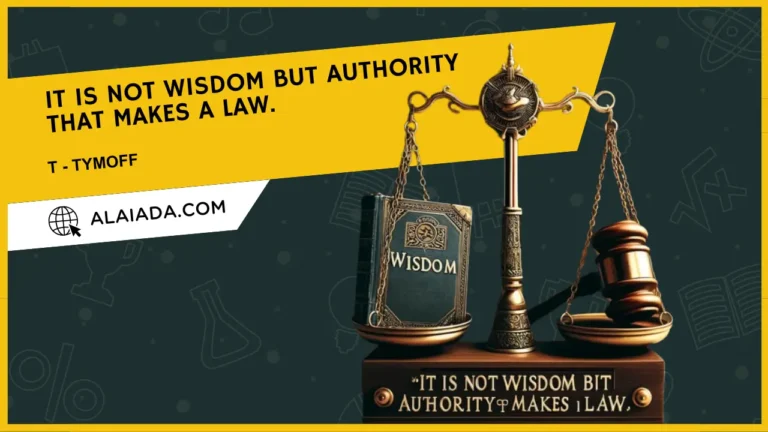Keith Wuornos Biography, Age, Nationality, Family, Sister and Cause of Death

Keith Wuornos is the brother of Aileen Carol Wuornos, who was an American sex worker and became infamous as “America’s first female serial killer.” Aileen engaged in street prostitution along Florida highways in 1989–1990, where she fatally shot and robbed seven of her male clients. She was convicted of six of these murders and received a death sentence. This means she was found guilty of six out of the seven killings, and as a result, she was sentenced to be executed.
| Name | Keith Wuornos |
| Famous as | brother of Aileen Wuornos |
| Gender | Male |
| Date of birth | March 14, 1955 |
| Sibling | Aileen Wuornos |
| Birthplace | Rochester, Oakland County, Michigan, USA. |
| Died | 17 July 1976 (aged 21) |
| Parents | Diane Wuornos and Leo Dale Pittman |
| Grandparents | Lauri Wuornos and Britta Wuornos |
Life Span Keith Wuornos
The unusual date of February 29, 1956, holds significance as the day Aileen Carol Pittman came into the world in Rochester, Michigan. Diane Wuornos, Aileen’s mother, was previously married to Leo Dale Pittman and had two children with him—Keith and, two years later, Aileen. Diane, fearing her husband, divorced just before Aileen’s birth, finding it challenging to raise the children on her own. Consequently, she left them at her parents’ home.
Aileen never knew her mother, and her father, Dale, was a troubled individual with a history of psychopathic tendencies and criminal activities. Dale’s disturbing behavior dated back to his childhood, where he engaged in cruel acts such as tying cats’ tails together and watching them fight. Raised by loving grandparents, Dale’s psychopathic tendencies persisted, leading to violent acts, including beatings against his own grandmother.
In 1960, Aileen and Keith were adopted by their grandparents, Lauri and Britta Wuornos, who raised them alongside their own children. However, Lauri, an abusive grandfather, subjected Aileen to physical punishment, including beatings with a belt. Britta, her grandmother, struggled with alcoholism and failed to protect Aileen from the harsh treatment.
At the age of six, Aileen and Keith began to rebel, engaging in destructive behavior such as setting fires. Aileen suffered severe burns in one incident. By the age of eleven, Aileen was already involved in prostitution, exchanging her body for cigarettes, beer, and money, even engaging in intimate relations with her brother.
At fourteen, Aileen became pregnant, and her child was given up for adoption at birth. Shortly after giving birth, Britta passed away from liver failure, and Lauri expelled Aileen and Keith from their home. Keith succumbed to throat cancer at the age of twenty-one, leaving Aileen alone in the world. Aileen’s journey took her to Florida, where a brief marriage with Lewis Fell ended in annulment due to her aggressive behavior.
Returning to a life of hitchhiking and prostitution for survival, Aileen met Tyria Moore in a Florida gay bar. Despite not being a lesbian, Aileen formed an emotional attachment to Tyria, referring to her as her wife. Financial troubles and instability led Aileen to work harder, but a traumatic encounter with Richard Mallory, involving rape and assault, pushed her to commit murder in self-defense, sparking a series of six more murders along the Florida interstate.
Psychologists suggest that genetic predispositions combined with environmental factors shape individuals’ behaviors. Aileen exhibited aggression, influenced by both her biological father and maternal grandfather. The absence of parental love and emotional support during critical developmental periods contributed to Aileen’s acceptance of abusive behavior as morally acceptable. This became evident in her brief marriage, characterized by abuse, and her return to a life of crime where love and affection were not expected.
Early Life of Keith Wuornos and His Sister Aileeneith Wuornos Wuornos
Aileen and Keith Wuornos shared a sibling bond that went beyond the surface, as their connection was shaped by challenging experiences. Their family history was complex, beginning with their parents’ elopement and subsequent marriage when their mother, Diane, was just a teenager. Keith was born less than a year later on March 14, 1955, followed by Aileen in February 1956. However, by the time Aileen was born, Diane had already filed for divorce, setting off a series of struggles that led her to leave her children in 1960. The siblings were then adopted by their maternal grandparents.
Growing up in Michigan with their grandparents and their two other children, Keith and Aileen were unaware of their biological parents until they reached adolescence. The grandparents, described as strict alcoholics who allegedly neglected and abused family members, created an environment where the siblings had no choice but to confide in each other for support. The difficult circumstances seemingly drove them to explore a deeper connection, with reports suggesting they engaged in an incestuous relationship, possibly on a regular basis.
Their unique and challenging upbringing took an even more complicated turn when, at the age of 15, Aileen was expelled from her grandparents’ home. This expulsion coincided with her giving birth to a son, whom she apparently named after her brother Keith. The tumultuous family dynamics and the siblings’ reliance on each other created a complex web of relationships that continued to shape their lives in unexpected ways.
How Did Keith Wuornos Die
“Aileen Wuornos: American Boogeywoman” is a scary and suspenseful movie that dives deep into the life and early wrongdoings of the main character, a serial killer named Aileen Wuornos. The film pays special attention to how she tricked and deceived people. Despite Aileen committing the shocking act of killing seven men in just one year during her early 30s (from 1989 to 1990), her journey began with small thefts, rumored inappropriate sexual encounters, and telling lies.
One of the most interesting parts of her story is the complicated relationship she had with her older brother, Keith Wuornos. Now, let’s explore this relationship further to uncover more about it. Are you ready to learn more? Let’s delve into the details.
Did Aileen Wuornos Kill Her Brother
At first glance, Aileen and Keith Wuornos might seem like your average brother and sister, but beneath the surface, their connection ran deep, forged through challenging experiences that brought them comfort in various ways. Their family history adds a layer of complexity to their relationship. Diane, their mother, eloped and got married at a young age. Keith was born less than a year later on March 14, 1955. Aileen joined the family in February 1956, but by then, Diane had already filed for divorce.
Moreover, this decision led to further hardships, eventually prompting Diane to leave her children and embark on a new life in 1960. It was at this point that the siblings found themselves under the care of their maternal grandparents through adoption. The twists and turns of their family story created a unique bond between Aileen and Keith, shaping the course of their lives in unexpected ways. Let’s unravel the intricacies of their journey and understand how these early experiences played a pivotal role in their relationship.
How Did Keith Wuornos Die
On the 17th of July in 1976, a young man named Keith Wuornos passed away in Michigan due to esophageal cancer at the age of 21. There were no indications of any wrongdoing or evidence of violence, ruling out the possibility that his sister Aileen Wuornos was involved in his death. Despite this, Aileen did receive a $10,000 payout from Keith’s life insurance policy, which she reportedly spent quickly. This occurred at a time when Aileen was dealing with a restraining order and seeking an annulment from her 69-year-old husband, Lewis Gratz Fell. In simpler terms, Keith didn’t live long enough to witness his sister’s later actions as a serial killer.
Keith Wuornos Sister, what is Her Story
Within the span of a year, Aileen Wuornos was responsible for the deaths of seven men. Her first victim, Richard Charles Mallory, aged 51 and the owner of a hardware store in Clearwater, met his tragic end on November 30, 1989. Wuornos claimed she killed him in self-defense when he allegedly attempted to assault her.
Following Mallory, Wuornos took the life of David Andrew Spears, a construction worker. His lifeless, unclothed body was discovered on June 1, 1990, bearing multiple gunshot wounds. Charles Edmund Carskadon became her next target, and his body, bearing the evidence of nine gunshot wounds, was found on June 6, 1990.
Peter Abraham Siems, a retired merchant sailor, became another victim of Wuornos. His disappearance remained a mystery as his body was never recovered. The subsequent casualty in Wuornos’ grim spree was Troy Eugene Burress, whose lifeless body was discovered on August 4, 1990, bearing the marks of two gunshot wounds. The chilling sequence of events unfolded as Wuornos left a trail of tragedy and mystery in her wake, with each victim adding another layer to the disturbing narrative of her actions.
Haunting Stories From Aileen Wuornos’s Traumatic Childhood
Aileen Wuornos, the serial killer portrayed by Charlize Theron in the movie “Monster,” led a nomadic life and worked as a sex worker. She committed seven murders in Florida between 1989 and 1990. Her story is eerily reminiscent of Charles Manson, another drifter with a dark origin, which provides some insight into why she committed such heinous crimes. While it doesn’t justify taking someone’s life, Wuornos appears to have faced circumstances that may have shaped her into a murderer, even more so than other serial killers who had difficult childhoods.
Her upbringing was marked by harsh guardians, and she had to resort to sex work at a young age just to survive. These stories are not meant to excuse her actions, but they do provide a backdrop to understand the context of her terrible crimes. Wuornos’ life was filled with challenges and hardships that, while not justifying her actions, shed light on the factors that may have contributed to her descent into criminality. Exploring these aspects helps paint a more complete picture of the complex circumstances surrounding her disturbing acts.
As with other drifter-killers, it’s impossible to corroborate many of Wuornos’s claims. By the time she was apprehended in 1991, Wuornos was so adept at lying it’s likely she mythologized much of her upbringing. Nonetheless, there are still some Aileen Wuornos childhood facts that have been verified by researchers and family friends.
Vagabond Existence
Having once been under the care of the state, Wuornos lived a nomadic life as an adult, relying on hitchhiking and engaging in sex work to get by. In the mid-1970s, she faced legal troubles related to assault and disorderly conduct. Eventually, she moved to Florida and crossed paths with Lewis Fell, a wealthy yachtsman. They got married in 1976, but the marriage was quickly annulled when Wuornos got arrested again.
Over the next ten years, Wuornos found herself entangled in various criminal activities. It was in Daytona, Florida, that she met Tyria Moore, a 24-year-old, and the two entered into a romantic relationship. This connection marked a significant chapter in Wuornos’ tumultuous journey, adding further layers to her complex and troubled life.
Trial and Execution
The case created a huge buzz in the media because of the shocking nature of the crimes. During the trial, Wuornos claimed that Mallory had attacked and raped her, and she had killed him to protect herself. What wasn’t discussed in court was that Mallory had a history of serving a ten-year prison sentence for sexual assault. Wuornos insisted that she acted in self-defense in the other five murders as well, although she later took back these statements.
On January 27, 1992, the jury found Wuornos guilty of first-degree murder in the Mallory case, and she was sentenced to death. In the following months, she admitted guilt in the murders of the five other men, earning a death sentence for each confession. Despite this, she later confessed outside the courtroom to killing Siems, whose body was never found.
Wuornos spent ten years on death row. Eventually, she decided to dismiss her lawyers who were fighting to delay her execution. However, a court-appointed attorney raised concerns about Wuornos’ statements that hinted at her being out of touch with reality. In 2002, Florida governor Jeb Bush lifted a temporary stay of execution after three psychiatrists concluded that she was mentally competent to understand the death penalty and the reasons behind its enforcement. This marked a critical turning point in Wuornos’ legal battle and added another layer of complexity to her already sensational case.
Related articles
Christina Bezos Biography, Nationality, Family Life, Siblings and Professionalism
Who Are Pep Guardiola Daughters? Meet Maria Guardiola And Valentina Guardiola
Loralee Czuchna Don Knotts wife Career, Background, Net Worth
Conclusion
the life of keith wuornos , America’s first female serial killer, and the intricate web of relationships surrounding her, particularly with her brother Keith Wuornos, is a haunting tale of tragedy, abuse, and societal neglect. Born into a tumultuous family environment, Aileen and Keith faced early hardships that laid the foundation for their troubled lives.
The narrative of Aileen’s life is one marked by abandonment, abuse, and a struggle for survival. From a young age, she experienced the absence of parental love and support, enduring physical punishment at the hands of her abusive grandparents. Aileen’s rebellious journey into a life of prostitution, crime, and ultimately murder, reflects the profound impact of her challenging upbringing.
The interconnected lives of Aileen and Keith Wuornos take us through a tumultuous family history, shaped by their mother’s elopement, divorce, and subsequent abandonment. Adopted by their strict and abusive grandparents, the siblings found solace in each other, facing expulsion from their home and societal rejection. Their bond deepened under the weight of hardship, leading to reports of an incestuous relationship, highlighting the desperation for connection in the absence of a stable family foundation.
The untimely death of Keith Wuornos, succumbing to esophageal cancer at the age of 21, adds another layer of tragedy to Aileen’s complex story. While there is no evidence linking Aileen to Keith’s death, the receipt of a life insurance payout raises questions about the intersections of familial ties, financial struggles, and the subsequent trajectory of Aileen’s life.
Aileen’s descent into a life of crime, culminating in the brutal murders of seven men, is a chilling manifestation of the psychological scars left by her traumatic upbringing. The disturbing details of her crimes, presented in movies like “Monster,” delve into the psychological intricacies of her relationships and the harrowing experiences that molded her into a serial killer.
As we reflect on Aileen Wuornos’s haunting legacy, it is crucial to acknowledge the complexity of her story, rooted in a challenging childhood and a society that failed to provide the necessary support. While her actions are inexcusable, understanding the deep-seated factors that contributed to her criminality allows for a more nuanced perspective on the intersection of nature and nurture in shaping human behavior.
In exploring Aileen Wuornos’s traumatic childhood, the focus shifts from justification to comprehension, seeking to unravel the layers of pain, abuse, and neglect that paved the way for her descent into infamy. The haunting stories from her past, coupled with the eerie parallels to other drifter-killers, emphasize the need for a societal introspection into the factors that contribute to such extreme outcomes.
In essence, the tale of Aileen Wuornos and Keith Wuornos is a tragic narrative that transcends the boundaries of a true crime story. It serves as a stark reminder of the profound impact of early experiences on the human psyche and the intricate interplay between individual choices and the societal structures that shape them. As we grapple with the unsettling details of their lives, we are compelled to reflect on the broader implications for understanding, prevention, and addressing the complex dynamics that lead individuals down dark and destructive paths.















